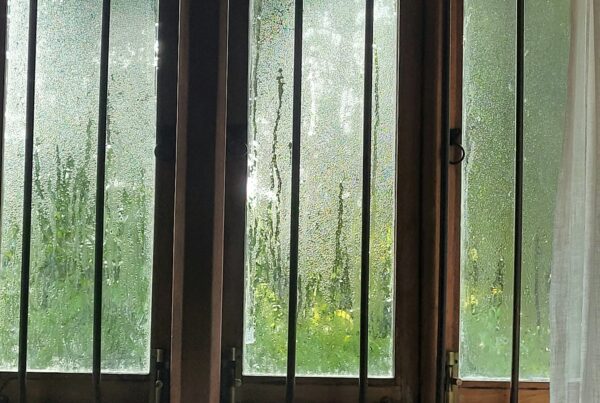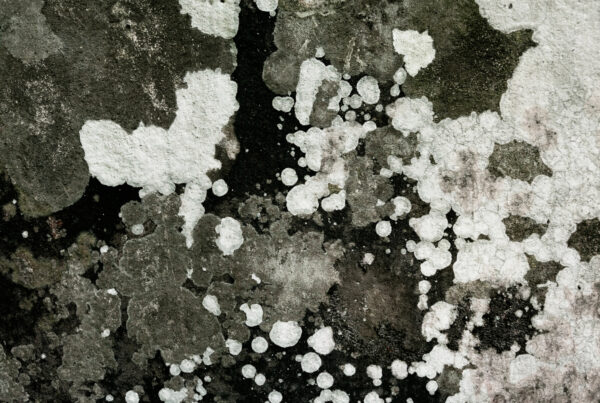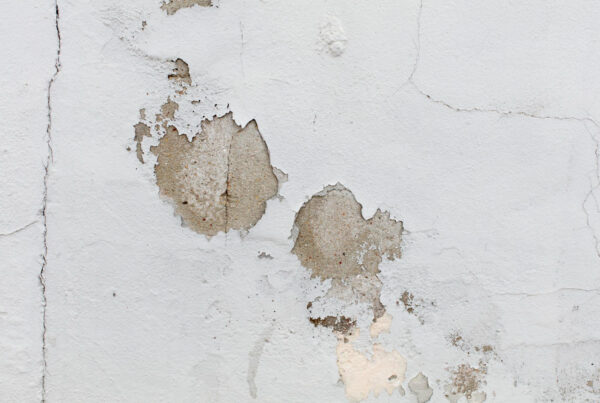Dry rot threatens a property’s structural integrity and value, requiring swift action to prevent devastating timber damage. Understanding how to identify early warning signs, explore treatment options, and work with specialists can save thousands in repair costs.
Below, we outline how to spot dry rot infection, understand its causes, learn treatment methods, and explore the best prevention strategies.
What Is Dry Rot and Why Does It Threaten Your Property?
Dry rot is one of the most destructive wood-destroying fungi affecting UK properties, especially older London buildings. This aggressive fungal infection, Serpula lacrymans, spreads rapidly through timber structures, causing structural damage that compromises property safety and market value.
Despite its name, dry rot requires moisture to develop. The fungus needs timber moisture content to germinate, usually in poorly ventilated areas. Once active, dry rot transports moisture through specialised structures called rhizomorphs, attacking dry timber located some considerable distances from the original source.
Property surveys have flagged dry rot as a major concern that can derail sales, reduce valuations, and create legal issues. Some insurance policies exclude dry rot damage, leaving property owners responsible for expensive remediation.
How Can You Identify Dry Rot in Your Property?
Recognising dry rot symptoms early allows you to seek professional dry rot treatment before extensive damage occurs. Visual signs of active dry rot include:
- White cotton-wool growth – Fresh dry rot appears as fluffy, white mycelium spreading in fan-shaped patterns
- Cuboidal cracking – Infected timber develops deep, rectangular crack patterns, distinguishing dry rot from other decay
- Rust-red fruiting bodies – Advanced infections produce bracket-like structures, releasing millions of spores
- Brittle, crumbling timber – Affected wood loses structural strength and may disintegrate when touched
- Dark brown discolouration – Severely damaged timber appears charred, indicating advanced fungal consumption
The distinctive musty, mushroom-like odour provides the first indication of dry rot activity, especially in cellars, under-stair areas, or poorly ventilated spaces. This smell persists even when growth remains hidden within wall cavities.
Properties experiencing persistent dampness create the ideal conditions for dry rot. Damp proofing issues contribute to conditions that allow dry rot to spread throughout building structures.
What Causes Dry Rot to Develop in Buildings?
Understanding dry rot causes helps property owners address root problems and implement prevention strategies. Common dry rot causes include:
- Rising damp – Failed damp-proof courses provide sustained moisture, allowing dry rot spores to germinate
- Penetrating damp – Roof leaks, damaged pointing, or defective guttering affect hidden structural timbers
- Plumbing failures – Supply pipes, waste systems, or heating leaks remain undetected, providing consistent moisture
- Poor ventilation – Blocked air bricks and inadequate airflow create stagnant conditions that limit moisture evaporation
- Construction defects – Older properties feature details that promote fungal growth through moisture retention
When Should You Consult Professional Dry Rot Specialists?
Dry rot requires professional intervention to achieve complete eradication and prevent costly structural damage. DIY treatment leads to recurring problems because untrained people miss hidden infection areas and fail to address the underlying moisture causes.
Specialists possess the expertise and equipment to identify the full extent of fungal damage. Advanced moisture detection tools reveal hidden infections that visual inspection cannot detect.
The experienced team at Refresh Property Services and Consultants conducts structural assessments that map damage patterns and identify contributing moisture sources. Our proven track record demonstrates the effectiveness of our solutions.
What Does Professional Dry Rot Treatment Involve?
Professional dry rot treatment follows established industry standards to achieve complete fungal eradication. Below are treatment steps:
- Structural survey – Electronic moisture detection maps the extent of damage to your property.
- Timber testing – Specialists examine areas to establish a complete remedial work scope.
- Timber removal – All infected wood gets removed, extending beyond visibly affected areas.
- Fungicidal treatment – Professional preservatives applied to affected masonry and remaining timber.
- Environmental controls – Improved ventilation or basement waterproofing address underlying moisture.
Replacement timber receives pre-treatment with professional preservatives, providing long-term protection against future attack.
How Much Does Professional Dry Rot Treatment Cost?
Dry rot treatment costs vary depending on the extent of infection, the severity of structural damage, and the underlying moisture problems. Treatment expenses reflect the scope of structural damage and the complexity of access.
Underlying moisture problems constitute substantial costs, especially when waterproofing or major repairs are necessary. However, addressing root causes proves essential for preventing expensive re-infections. Professional treatment is a sound investment compared to escalating structural repair costs if damage progresses unchecked.
Can You Prevent Future Dry Rot Problems?
Effective prevention focuses on controlling moisture conditions that facilitate fungal growth. Regular maintenance of roofing, guttering, and external pointing prevents water penetration.
Adequate ventilation prevents condensation formation in vulnerable areas such as cellars, roof spaces, and sub-floor voids. Annual inspections help detect early signs before extensive damage occurs.
Protect Your Property with Expert Dry Rot Treatment
Dry rot threatens a property’s structural integrity and financial value and demands swift professional intervention. The experienced timber preservation specialists at Refresh combine advanced diagnostic techniques with proven treatment methods to deliver complete fungal eradication and long-term protection.
Our dry rot treatment addresses visible infections and underlying moisture problems through integrated solutions, preventing future growth. Property owners receive transparent assessments, detailed treatment plans, and guaranteed results backed by decades of experience. Contact us for expert assessment and professional treatment solutions.



